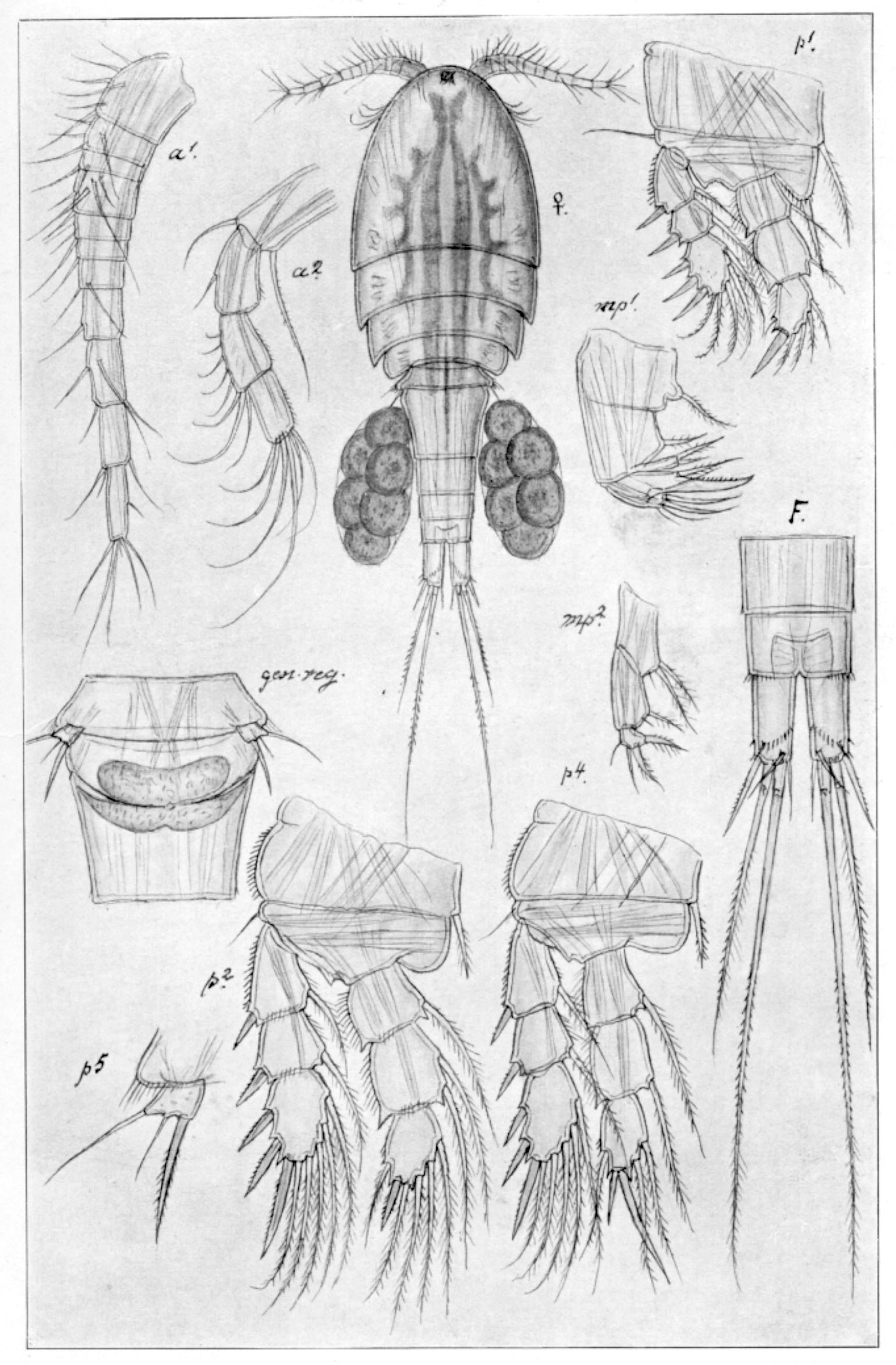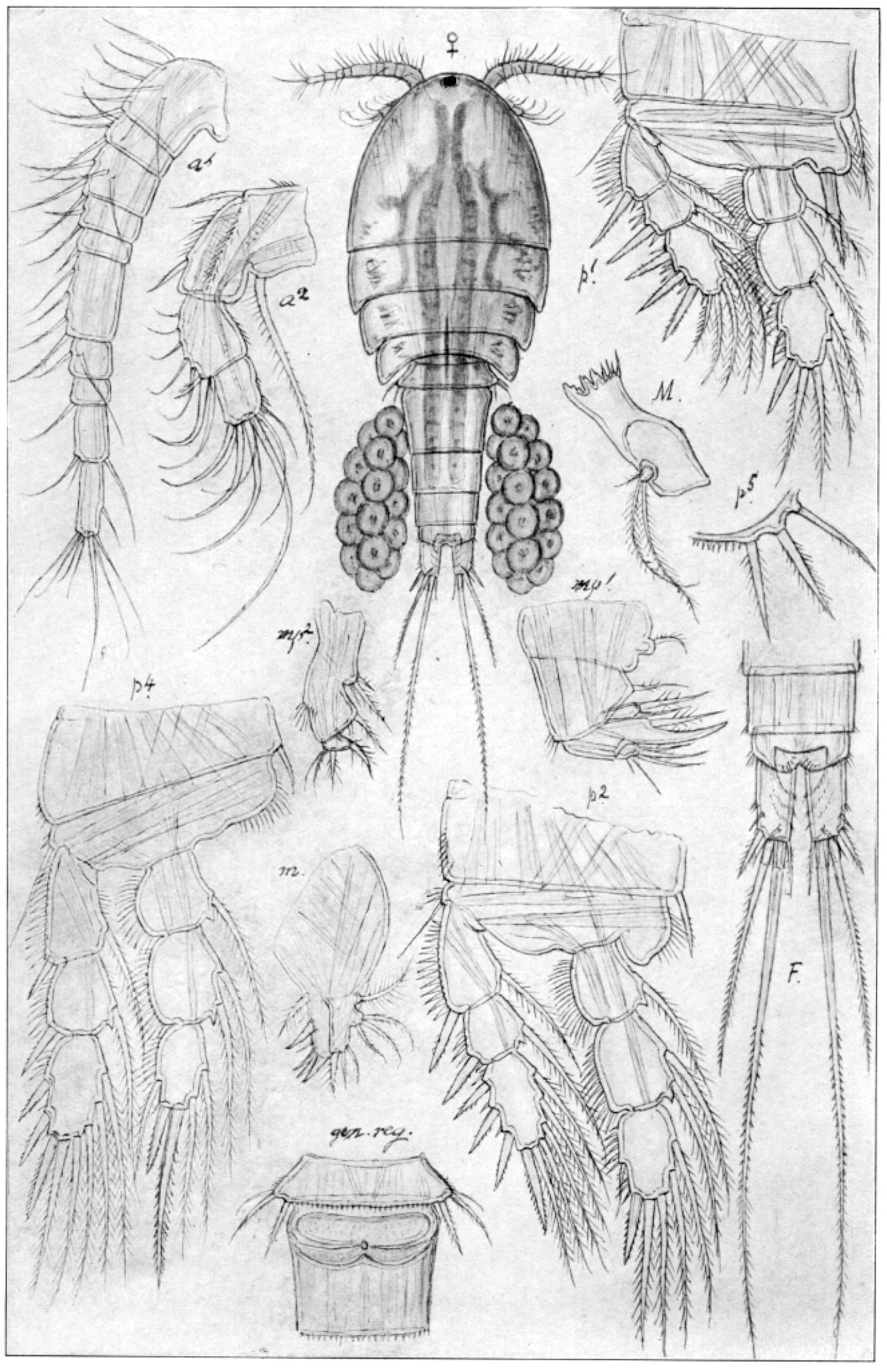Paracyclops affinis
Paracyclops affinis is a robust, relatively small copepode with both short antennae (11 joints) and furca. Its colour is generally dark bluish grey and it is associated with nutrient rich localities situated below timberline.
Key characteristics
Paracyclops affinis (female)
Like other species that belongs to this genus, Paracyclops affinis has short antennae (11 joints). The anterior part is conspicuously broad and flattened. This species is distinguished from its relative P. poppei by the appearance of the furca which is shorter, about twice as long as wide. As in P. fimbriatus, dorsally the two brances of furca are crossed by a row of small spines. The habitués of this species is somewhat like Ectocyclops phaleratus, which is larger and looks even more robust than P. affinis.
Female: Length 0.7–0.9 mm
Male: Length 0.6–0.7 mm
Ecology and distribution
Among species in the genus Paracyclops, P. affinis is the most common, found in about 10 % of the investigated lakes. The majority of records are from localities below 300 m a.s.l. and it is never found above 1000 m a.s.l. It is found in water bodies of all sizes, and seems also to be quite tolerant towards acidity. P. affinis occurs with higher frequency in electrolyte rich water than in electrolyte poor water.
| Vitenskapelig navn | < 4,5 | 4,5 - 4,9 | 5,0 - 5,4 | 5,5 - 5,9 | 6,0 - 6,4 | 6,5 - 7,0 | 7,0 - 7,4 | > 7,5 |
|---|---|---|---|---|---|---|---|---|
| 1 | 9,5 | 11,7 | 16,7 | 13 | 10,4 | 12 | 16,7 |
| Vitenskapelig navn | < 1,0 | 1,0 - 1,4 | 1,5 - 1,9 | 2,0 - 2,9 | 3,0 - 3,9 | 4,0 - 4,9 | 5,0 - 6,9 | 7,0 - 9,9 | > 10,0 |
|---|---|---|---|---|---|---|---|---|---|
| 2,2 | 2,6 | 8,8 | 7,4 | 12 | 16 | 18,2 | 16,7 | 21,1 |
| Vitenskapelig navn | < 0,01 | 0,01 - 0,09 | 0,1 - 0,9 | 1,0 - 9,9 | 10,0 - 99 | 100 - 999 | > 1000 |
|---|---|---|---|---|---|---|---|
| 3,9 | 6,5 | 5,6 | 12,6 | 10,3 | 12,7 | 19,6 |
| Vitenskapelig navn | < 100 | 100-299 | 300-499 | 500-699 | 700-999 | >1000 |
|---|---|---|---|---|---|---|
| 13,1 | 19 | 6,8 | 1,7 | 5,1 | 0 |
Look alikes
Ectocyclops phaleratus

